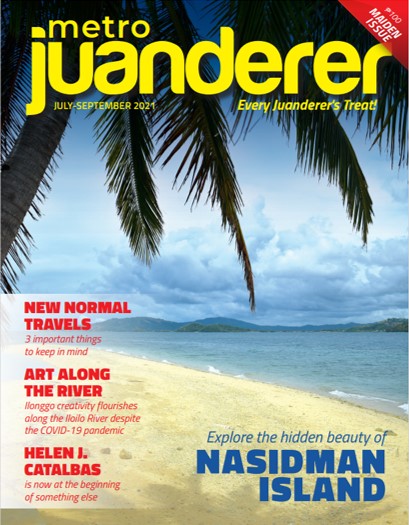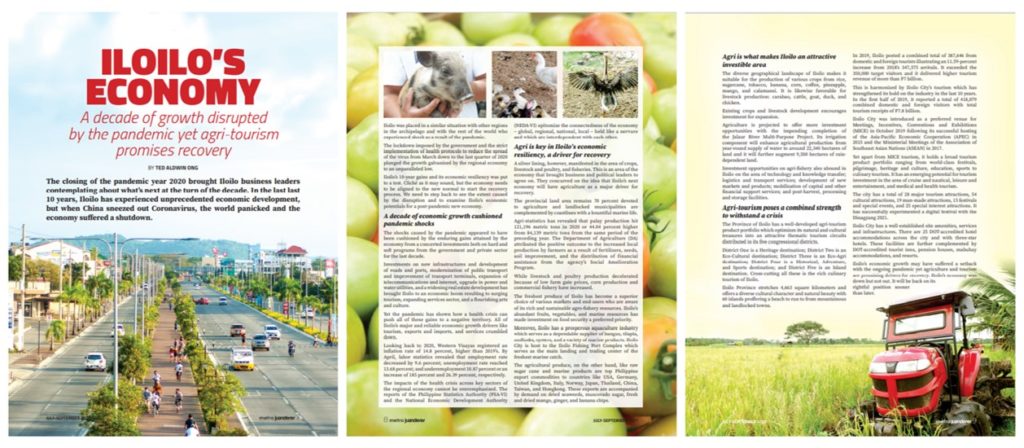It is astonishing to think of releasing a print magazine in a digital era and within the period of a persistent health crisis. Yet for the more adventurous entrepreneurs, a brutal crisis like the Covid-19 pandemic, can inspire new risks. This is how I translate the entry of Metro Juanderer magazine in the market.
The business and tourism magazine comes out in a period of time where print media is bleeding from impacts of the new media platforms. Print media has been suffering from a steady decline of readership ahead of social media mainstreaming.
In a 2017 Media Ownership Monitor report, medialandscapes.org pointed out that ‘newspapers [are losing] their relevance as a source of information” among Filipinos, a trend that holds sway since 2013 from survey results.
Majority of Filipinos or 55 percent ‘prefer to watch news online rather than read,’ shared Media Landscapes using a Newman, et al. 2020 study. It highlighted that only 22 percent of Filipinos get news from newspapers.

In a 2013 data, the Philippine Statistics Authority shared a seven year trend which showed that ‘barely one in 10 Filipinos read newspapers everyday.’
While magazine readership is said to enjoy a slightly higher percentage of readership, it doesn’t change the fact that readership of print media materials in general has started to dive down 14 years ahead of Covid-19 or 15 years preceding the introduction of Metro Juanderer to the market.
Read: #MetroJuanderer biz-tourism magazine is off the press
The global trend could not be far behind and the dire situation that hovered over the print media for most of the past decade was clutched by Covid-19 resulting in the cruel death of many print media outlets and which displaced journalists and media workers.
However, it is not all bad news for print media as far as survival is concerned. Metro Juanderer, in spite of my lack of full understanding of its vision and the wisdom behind its publisher’s motivation, offers a local case sample of an emerging global trend triggered by Covid-19 which “re-introduces past technology” for the present generation to rediscover and appreciate – reading and the print media.
Metro Juanderer is here to re-educate today’s news consumers. The decline of readership is rooted on the level of literacy of its consumers and of the populace in general.
No less than social media has effectively shown that society is not only perpetually divided into classes, but that it is also divided in terms of educational level; wherein the educated can spread mass idiocy and that an idiot can make things sound intellectually convincing.
The interplay in social media is so real, it can blur the demarcation line that separates what is right from what is wrong; from what is accurate information from misinformation. As such, re-education using print media is key to kick-off the effort of bringing up the level of literacy of news consumers even in the business and tourism sector whose inability to share accurate, timely, and reliable information was exposed by the pandemic.
Print media enterprises has to squarely face the reality – ‘people with lower levels of education are more likely to want to watch online news compared with the better educated’ (Newman et al., 2020) and this news consumption pattern is displayed across 40 countries, including the Philippines, as shared by Digital News Report 2020.
It underscored that “in the case of the Philippines, one of the influential factors could be ‘educational deprivation’ – the strong preference for online news over print news can be explained by the fact that the majority of Filipino families lack even basic education, citing the PSA as reported by BusinessMirror in 2018.
Print media’s enduring role is to educate and Metro Juanderer carries a mission to re-introduce reading to its target audience at a dismal cost of P100 a copy.
Perhaps this is the reason why the magazine has commissioned journalists, writers and bloggers with journalism backgrounds – media persons who possess the integrity and experience to come up with educational and informative articles that adhere to journalism standards and ethics.
Metro Juanderer enters a hybridized era. Print alone, however, will not make a magazine survive in a digital era. It must go hybrid, meaning accessible both in print and in digital versions, in order to seize the moment of change in consumer behavior, market modifications and social transformations brought by technological solutions as a consequence of the pandemic.
Datareportal.com reported that the Philippines has 73.91 million internet users with internet penetration rate at 67.0 percent as of January 2021. The pandemic has brought more Filipino to the internet with a 4.2 million (+6.1%) increase of users from 2020 to 2021.Social media remains the platform where news distribution is concentrated. In the same report it revealed that social media users in the Philippines increased by 16 million between the pandemic year 2020 and 2021. As of January 2021, the Philippines has 89.00 million social media users or now equivalent to 80.7 percent of the country’s total population.

Social media is a platform to spread quality and accurate news information, to level the playing field of news information, and to overcome the dominance of information materials of abject journalistic quality, low educational value, and those that are promoted using misinformation or disinformation in the online market through social media.
Print media’s presence is essential online, not only for marketing and advertising purposes, but to fulfill its mission of public education. Going hybrid is not just for the survival of print news enterprises, rather it is a natural market function necessitated by the times.
The pandemic and the risks that it brought to the media industry only ripened the entry of Metro Juanderer to the market. May it serve as an instrument for readers to appreciate tourist destinations and to rediscover the beauty and function of a print magazine.
The Metro Juanderer emerges in a hybridized era is also posted at the opinion section of IMT News.